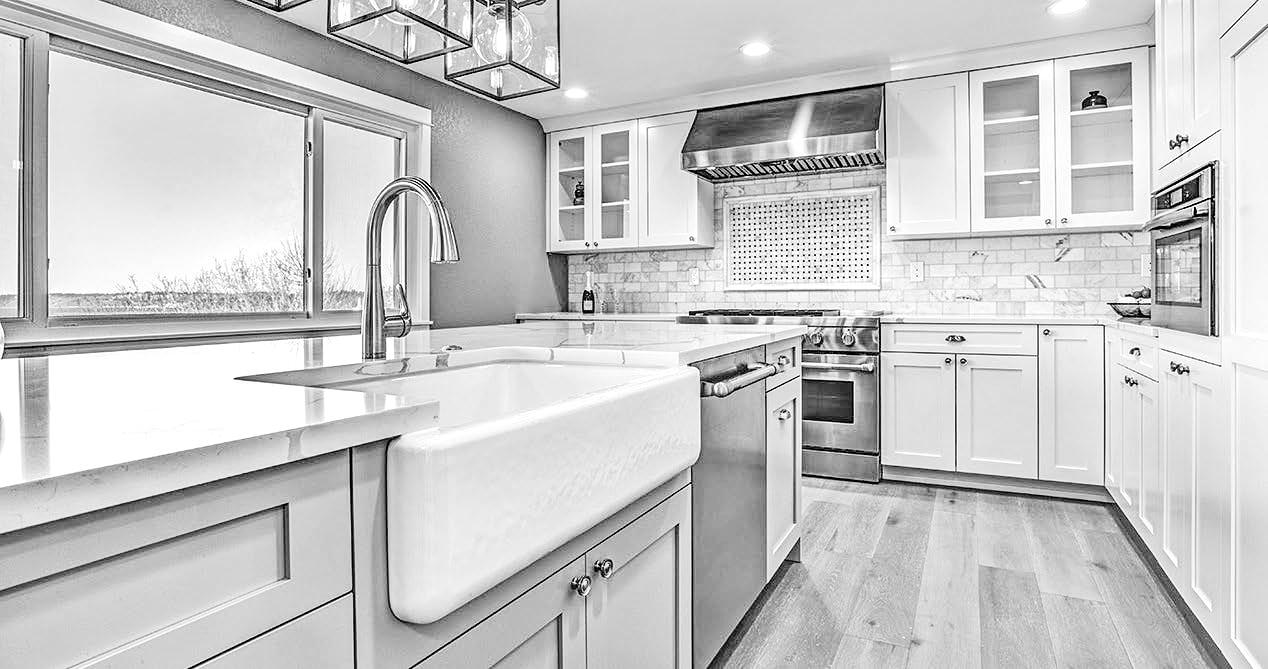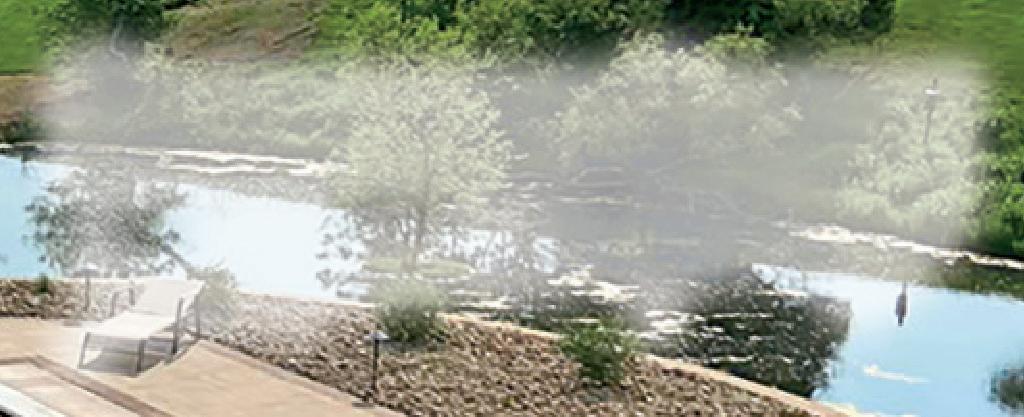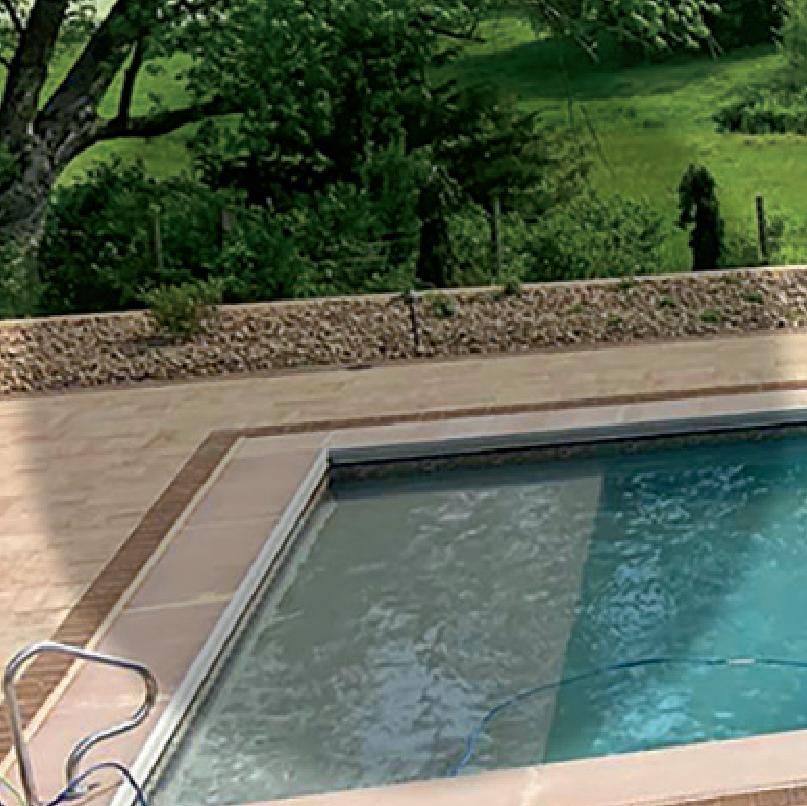Fall Home & Garden












Plan now to ensure that when fall weather signals the end of “outdoor living,” your indoor space will be a welcoming respite from the hustle and bustle of everyday life. Walk around to inspect furniture, cabinets, use and lack of space, and decor in general. Would new paint on wood furniture, cabinets, doors or trim be brighter (or more tranquil)? How about a new live edge or other accent table or new legs for an existing table? Do closets need a redo to add storage? Could the home office use shelving? Or maybe space exists for a family game area? The possibilities are endless, and Woodcraft has the tools, materials and supplies you need for successful projects, as
well as a wealth of how-to insight and information.







Below are some tools and supplies and how-to tips for assembly and building projects. There’s also some useful tips for coloring or recoloring wood furniture, cabinets and other pieces with stains and paints.



Live Edge Timber Co. Rustic Maple Slabs and Rhombus Slab Legs come predrilled and ready for assembly to create furniture like the coffee table pictured here. Click https://bit. ly/Rustic-Table-Build to view the assembly process.
DIY Hairpin Legs in black and raw steel are an easy way to add a modern look to a Cont. 3

As hours of daylight shorten and fall gives way to winter, thoughts shift from fall foliage to spending time cuddling under warm blankets and being cozy indoors. A fireplace can improve the ambiance of any room and help to create a warm and welcoming gathering spot.
Home fireplaces typically are wood-burning or gas. Though maintenance for these fireplaces differs, certain preparatory steps must be taken to prepare a fireplace for winter.
Clear the clutter
Items can accumulate in areas that are not in use, and a fireplace is no exception. Take a few hours to remove any belongings from in front of the fireplace and clean the mantle thoroughly.
Have the chimney cleaned
Hire a professional chimney cleaning company to inspect the chimney and clean it thoroughly before winter. According to BobVila.com, a chimney should be cleaned once a year, or after about every 80 fires. The National
Fire Protection Association says failure to properly clean chimneys is one of the leading contributors to home fires. That’s due to creosote, a highly flammable residue that builds up in the flue that lines the chimney.
Check for cracks and loose joints. Hire a professional mason to make any repairs, as special materials are needed to withstand the heat of fires. Install a chimney cap and screen
per mesh with a cap on top. This protects the chimney from rain and downdrafts and keeps animals and debris from getting into the chimney.
Prune overhanging branches
Assess the outdoor vent Gas fireplaces typically emit exhaust through a vent in the home. Remove any blockages from the vent, including leaves, cobwebs and debris. Check glass or other coverings
The glass or face of the fireplace helps regulate carbon monoxide exposure and protects people from the flames. Be sure the glass covering is intact.
Clean ceramic logs
Gas fireplaces use ceramic logs, rocks or beads that can become dusty. Clean them prior to use. Dirty ceramic logs can be a fire hazard and produce an unpleasant burning smell.
Check the blower and pilot
If the fireplace has an electric blower, clean and dust it so it doesn’t become clogged. Inspect the pilot light for any wear and tear that includes wiring or structural issues.
Inspect the interior
The interior of a wood-burning fireplace is likely lined with fire bricks.
According to Family Handyman, a chimney cap is a protective covering that goes over the top of the chimney. It is made of steel or cop-
If there are trees close to the home and the chimney, cut them back, as they can be a fire hazard. Branches and leaves also can restrict the proper draft of the chimney.
It takes several steps to prepare fireplaces for cold weather seasons when they’re most likely to be used with frequency. — Metro Creative tabletop or slab.
Festool’s T18 Cordless Drill Plus Set features a brushless EC-TEC motor and electronic torque setting for precise screw driving and drilling wood or steel. The set includes a belt clip, two 4.0 AH HighPower battery packs, Rapid Charger TCL 6 and Systainer SYS3 M 187.
The Kreg® Pocket-Hole Jig 520Pro makes joinery quick and easy. All you need are a drill/driver and screws. Watch this video https://bit.ly/KregJigs.
A Gyokucho Ryoba Razorsaw is a handy general purpose saw that has rip teeth on one edge and crosscut teeth on the other side.
Bore shelf pin holes on 32 mm spacing quickly and accurately using the 1/4” Kreg® Shelf Pin Jig or the 5 mm Kreg® Shelf Pin Jig. Both are compatible with face frame and frameless cabinets, with alignment windows for added versatility.
For comfortable hand sanding, choose the Preppin’ Weapon Sanding Block Kit. Add power with the cordless SKIL® POWERCORE Brushless 20V Random Orbital Sander that can tackle refinishing wood furniture, cabinetry rehab and more.
To remove paints and other coverings, Blue Bear® Soy Gel™ Paint & Urethane Stripper is a handy helper.
Krud Kutter® Prepaint Cleaner TSP Substitute cleans and deglosses surfac-
es so paint or stain will adhere better to the surface being covered.
If you are recoloring or finishing for the first time, GENERAL FINISHES® Gel Stains and GENERAL FINISHES
Milk Paint are easy to use. Gel Stains come in 15 colors, while Milk Paint is available in 33 colors.
Follow GENERAL FINISHES’ instructions for prep, application, and topcoats for paints and stains to avoid any yellowing issues and to ensure the best results over time.
There are many other available topcoat products. When choosing and using a topcoat, follow the manufacturer’s directions closely to avoid disappointment over changes in color or other undesirable results.
GENERAL FINISHES® High Performance Water Based Topcoat offers the consumer-friendly characteristics of a polyacrylic blend: it does not yellow with age and cleanup is easy with water. In addition, HP is stabilized with UV absorbers to maximize its performance and afford protection to the stains, paints, and wood beneath.
GENERAL FINISHES® Oil Based Gel Topcoat is compatible with GENERAL FINISHES Gel Stains.
Use GENERAL FINISHES® Water-Based Stain Blocker White Primer over an existing finish, raw wood or MDF as a base coat for light colored GENERAL FINISHES Milk Paint, Chalk Style Paint and Pigmented Polys.
Kitchens are the busiest rooms in most homes. Kitchens have become more than just places to prepare meals, with many functioning as gathering spaces and even go-to dining spots in homes that do not feature formal dining rooms.
So much time spent in the kitchen makes it worthwhile to invest in these popular spaces. Kitchen renovations are high on many homeowners’ todo lists, and there’s many decisions to make once they commit to redoing the room. When renovating a kitchen, homeowners will have to choose which countertop material they want to install, and the following rundown of popular options can help simplify that decision.
Quartz
Quartz is considered a low-maintenance and durable countertop material. The home improvement experts at This Old House note that quartz countertops are typically 94 percent ground quartz and now come with an honed, sandblasted or embossed treatment, which makes them appealing to homeowners with varying ideas on the ideal look of a kitchen countertop. Quartz can crack if it’s not handled properly, and edges and corners can chip over time. Rounded edges can minimize the risk of chipping. Costs vary by location and product availability, but quartz typically costs about the same as natural stone.
Granite
Consumer Reports notes that no two slabs of granite are the same, and that uniqueness has long appealed to homeowners. Tests run by Consumer Reports found that heat, cuts and scratches did not harm granite, though this material, like quartz, can crack around edges and corners. Granite is a durable material that, if properly main-

tained, can last several decades. Granite also is nonporous, which makes it resistant to bacteria.
Laminate
Laminate countertops appeal to budget-friendly homeowners and Consumer Reports notes that they’re easy to install. Home Depot also notes that laminate countertops come in a wide range of colors, textures and designs. Laminate countertops also are durable, which helps budget-conscious homeowners stretch their dollars even further. Laminate countertops are easily maintained, though it’s also easy to permanently damage them with knives, so Consumer Reports recommends always using a cutting board when preparing meals on laminate.
Butcher Block Butcher block countertops are among the more unique options homeowners may consider. Sometimes referred to as “wood countertops,” butcher block countertops are made from wooden strips that are fused together. The home improvement experts at BobVila.com note that butcher block is among the more affordable materials, but the final cost will be dictated by location and availability. BobVila. com notes that butcher block countertops are highly sensitive to liquid, so exposure to moisture should be limited. Sealing butcher block countertops immediately after installation can help protect against bacteria and warping. Though butcher blocks can be high maintenance, many homeowners find the unique look is well worth the extra elbow grease.
Kitchen countertops can define how the room looks, and homeowners have many options to choose from when designing a new kitchen. — Metro Creative
The kitchen is a busy room in many homes. That popularity likely has something to do with why so many homeowners spend sizable sums renovating their kitchens. According to highlights from the 2022 U.S. Houzz Kitchen Trends Study, the median spend on major kitchen remodels grew by 14 percent from the previous year, and minor remodels increased by 25 percent. Spurred on by increased time spent at home during the pandemic, the main impetus for kitchen remodels according to the study was that homeowners wanted to make these improvements all along and finally had the time and means to do so.
There are many aspects of a kitchen that homeowners can change. Houzz found 94 percent of renovators either fully or partially replaced cabinets in their improvement plans. Cabinets are a major component of kitchen layouts. Cabinets help to establish the aesthet -

ic of a kitchen and serve a useful function, providing necessary storage space to ensure the room does not appear cluttered. Homeowners have different options when it comes to cabinet renovations, and they may need to decide if they need to replace or reface their cabinets.
Replacement
Cabinet replacement involves removing all of the existing cabinets before new cabinets are leveled and installed. According to the home improvement resource The Spruce, homeowners can expect to pay between $13,000 and $30,000 for contractor grade cabinets. Cabinet replacement is a good idea when homeowners want to add more cabinet space or create a new layout in the room.
Refacing
Cabinet refacing is less messy and less disruptive than replacement. All cabinets re -
main the same size and in the same location. The cabinet boxes must be in good shape to facilitate a refacing. The process involves installation of new drawer fronts and cabinet doors, as well as veneering of the cabinet boxes. New hardware typically is installed as well. The insides of the cabinets typically remain the same. The Spruce says cabinet refacing can be 30 to 50 percent cheaper than a replacement.
Most people call in professionals to change their cabinets. Cabinet replacement can be a do-it-yourself job, but it involves measuring and ensuring everything fits and is leveled appropriately. Homeowners who choose to reface their cabinets themselves may opt to paint or restain. Wood veneer or a new door and drawer panel installation can be complicated and is best left to qualified contractors.
— Metro Creative

Houses typically feature various areas that are traditionally designed for storage, such as garages, basements and attics. However, with some renovation, these spaces can be transformed into livable areas.

Homeowners who would like to convert attics into livable spaces need to take certain things into consideration before starting an improvement project. While the attic may seem like it has plenty of room and is structurally sound enough to walk in, that’s not necessarily so. To be converted into usable living space, an attic must be brought up to the standards of modern building codes, according to the design experts at Board & Vellum. Retrofitting beams and insulation can eat up available space in an attic. Thus, it is best to consult an expert to see if an attic can be converted.
Furthermore, an attic that was not




































initially designed as a room when the house was built can add extra “load” upstairs if it is converted. That could present certain structural problems. That means a structural engineer also must be consulted to see if adding beams, flooring and drywall will necessitate other changes elsewhere in the home to accommodate the extra load.

In order to have a functional attic room, building codes will dictate that it needs to be accessible by a full-size staircase. Also, it will need to have another exit in case of an emergency so that will likely be an accessible window, according to the home information site The Fill. Homeowners’ budgets and renovation plans will need to factor into these considerations. Homeowners also are advised to check local permits to determine what else may be required to go forward. It is best to follow the rules. Lack of a permit for work can affect the
ability to sell a home down the line. Individuals also should plan forheating and cooling upgrades as the home will need to have ductwork installed in the attic, or at the least, a stand-alone heating and cooling unit. As heat rises, it can get quite warm in an attic, so ventilation and comfort should be considered. The attic will need to be wired for electricity for lighting and other needs. Air sealing and additional insulation can the attic space more comfortable as well. Consult with a qualified electrician and an HVAC technician and have an energy audit done to discuss needs. Attic renovations can give homeowners more space in their homes, which can be used as offices, bedrooms or cozy corners. This is no small undertaking and all of the right steps need to be followed to ensure a legal, safe and successful renovation.


 — Metro Creative
— Metro Creative




































No greenery is more recognized during the holiday season thanChristmas trees. However, wreaths likely take a close second to towering evergreens when it comes to green holiday decor.
It is important to treat wreaths with care in order to maximize their longevity and beauty. The following tips can help ensure wreaths remain fresh and festive throughout the month of December.
• Choose the right design. Select a wreath that is not too busy nor too boring. It is important to strike the right balance. A good wreath has a focal point, which may be a festive bow or another decorative piece. Keep in mind this is a wreath which should have lots of greenery on display, rather than flowers that characterize other seasonal wreaths.
• Weigh your wreath. Take a moment to ask a salesman how heavy the wreath is when you purchase it. Knowing the weight of the wreath will help you identify the proper hanging mechanism, as hooks are generally characterized by the weight they can hold. A less than sturdy hook can increase the chances the wreath falls down and ends up damaged.
• Determine your hanging method. Once you know the weight of the wreath, you can figure out how to secure it to a door or window without having to drill holes into any structures. Removable adhesive strips are one option, provided you attach something like cardboard or another material to the back of the wreath upon which the adhesive strips can be stuck. Otherwise, over-the-door wreath hangers are wise investments that can support large, heavy wreaths.
• Consider the safety of pets. When decorating with plant material, it is important to know what is safe for pets in the household. According to the Virginia-Maryland College of Veterinary Medicine, most holiday plants cause irritation of the mouth. Pine trees produce oils that can cause gastrointestinal issues.
• Exercise caution with storm doors. If you hang a wreath between a glass storm door and your front door, the air around the wreath will heat up and cause the wreath to turn brown.

• Choose a cool spot. In addition to avoiding heat that builds up between
doors, you should select a cool spot out of the hot sun. Many pine trees, like balsam fir, react more favorably to cooler temperatures and will keep their vibrant green color and fragrance more readily.
• Go artificial. If you want to hang a wreath indoors, opt for an artificial one.
Prolonged warm temperatures inside may prematurely dry out a fresh wreath, ultimately turning it into a fire hazard. A few pointers can ensure wreaths remain a beautiful component of holiday decor throughout the season.
— Metro Creative

Certain home renovation projects are more glamorous than others. A remodeled kitchen is sure to garner its share of “oohs and aahs,” while a newly paved driveway is much less likely to dazzle guests.
A gutter replacement is another job that might not have the wow factor. But fully functioning gutters are a must and can help to prevent potentially expensive roof damage. Gutters rarely draw attention, but homeowners can keep an eye out for signs that indicate gutters need to be replaced.
Various signs indicate it’s time to replace existing gutters. Homeowners should act promptly if any of the following signs arise, as poorly functioning gutters can make it hard for water to get into the downspouts, ultimately pushing it backward and likely underneath roof shingles, where the result can be costly water damage.
• Peeling paint
• Cracks
• Pooling water in the gutter
• Mildew in the gutter, which can sometimes be seen even from the ground
• Water damage: Water damage on the gutter can be limited to certain spots and will be noticeable on the underside of the gutter
• Soffit damage
• Sagging gutters
• Detached gutters, which can be detached from other pieces or the house • Rust
Many home improvements can be completed successfully by skilled do-ityourselfers, but a gutter replacement is best left to the professionals. Homeowners who live in single-story homes may be able to replace gutters on their own, but the issues that can arise when gutters are not functioning at optimal capacity make this a job best suited to professionals, even in residences without high roofs.
Some gutters may be under a manufacturer’s warranty, so homeowners can check to see if their gutters qualify for a free upgrade. Experience is one of the best reasons to work with a professional gutter installation team. Experienced professionals can identify which gutters are the best fit based on a host of factors, including the pitch of the roof, local conditions and the size of the house. In addition, gutter installation requires the use of various tools that many DIYers may not have on hand, which can cut into the cost savings of doing the project yourself.
Homeowners also should not underestimate the challenges of working on ladders that are high up off the ground. Professionals are accustomed to such challenges, while DIYers may not be comfortable or used to climbing ladders with materials and tools in hand.
A gutter replacement is a worthwhile investment that can ensure rain water efficiently and effectively runs through gutters and away from the roof. Leaving this task to the professionals can ensure the job is done right.

Foliage and football might be two things people instantly associate with fall, but there’s more to this beloved season than brightly colored leaves and action on the gridiron.
Gardeners know that spring is an ideal time to plan and plant their favorite flowers and most flavorful fruits and vegetables. However, seasoned gardeners know that gardening is a year-round commitment. Pruning is one of the keys to keeping perennials coming back for years to come, and fall is an ideal time to take on this important task.
Pruning perennials in the fall is not a one-size-fits-all endeavor. According to the Old Farmer’s Almanac, some perennials can be cut down after the first killing frost, while others can be left to benefit wildlife, including birds and insects. Understanding pruning and when to do it this fall can help gar-
deners lay a strong foundation for their gardens that will benefit them next spring.
Why should some perennials be pruned?
The College of Agricultural Sciences at Pennsylvania State University notes that perennials that have become diseased or infested with insects are pruned to prevent those problems from resurfacing in the spring. In addition, according to the Old Farmer’s Almanac, many herbaceous perennials have old foliage and dying stems after several hard frosts. If dead foliage or dying stems aren’t pruned, disease, slugs and other pests can overwinter in the plants. Cutting these plants down to the ground after several hard frosts allows the base of the plant to remain dormant over the winter but makes the plant less hospitable to disease and insects.
Which perennials should I prune?

The first step to pruning perennials is to recognize which need to be pruned and which can be left intact for the winter. The Old Farmer’s Almanac notes that bee balm and phlox are prone to powdery mildew and should be cut back once they’re gone. Hostas harbor slug eggs, so they, too, should be pruned after a hard frost. Hosta leaves that have fallen on the ground should be removed as well. There’s no need to cut back certain perennials if they’re healthy. For example, hardy geraniums do not require pruning in the fall, and Penn State Extension notes that hardy perennials like garden mums are more likely to survive a cold winter if they’re left intact. That’s because the tops of such plants will collect leaves and snow for insulation and
moisture over the course of winter. Gardeners who are unsure about fall pruning can speak with their local gardening center for additional advice regarding which plants to cut back before winter.
Gardeners need not rush to prune perennials in the fall. Diseased or infested plants can be pruned at the first sight of disease or infestation, but gardeners can wait until several hard frosts have occurred before they prune healthy perennials. In gardening parlance, a hard frost refers to when temperatures drop below 28 F. Several hard frosts kill the uppermost growth of most perennials, making this an ideal time to prune them.
Pruning perennials in fall can be the first step toward creating an awe-inspiring spring garden.
— Metro Creative
Home interiors can be spruced up in a number of ways. Ideas run the gamut from relatively inexpensive changes in paint color to more extensive (and expensive) remodels that may include demolition and reconstruction. Investing in new home decor is another way to breathe new life into spaces, and this approach that falls somewhere in the middle in regard to cost.
Material and product costs remain high across the board, so individuals interested in changing the furniture and other design elements in their homes might be seeking ways to do so in the most affordable way possible. In such instances, homeowners can try these bud-
get-friendly ways to overhaul their home decor.
• Create the illusion of more space. Light, bright and white are key attributes to remember when selecting design elements for rooms where you want to create the illusion of more square footage. Painting the walls in very light colors, increasing natural and artificial light, including using well-placed mirrors to reflect light, and decorating with light-colored fabrics can help a space seem more roomy.

• Replace the accessories. Replacing curtains, area rugs, throw pillows, and chair cushions is an easy way to change a room without a big investment. Consider
updating some wall art and tying color schemes together with all of the newly introduced elements.
• Splurge on statement pieces that will be used frequently. These may include chandeliers, unique rugs or an eye-catching piece of furniture.
• Shop ‘discount’ stores for furniture and accents. Traditional design centers can be great places to find plenty of high-quality merchandise. However, don’t overlook local discount or close-out centers that may have items at very reasonable costs. Stores like Home Goods, At Home and Big Lots routinely get new merchandise that changes with the season, helping homeowners to refresh their
spaces without having to dig deep into their pockets. Shop the high-end stores for inspiration, then try to find “dupes” in the discount stores that will mimic the looks for less.
• Cut out the clutter. Modern homes are lean and clean. A home’s interior instantly looks more high-end and appealing when the clutter is removed. Consider keeping main living areas free from too many knickknacks and other accents. If you want to display a special collection, set aside a room specifically for such items.
There are many budget-friendly ways to make interior spaces more inviting.
— Metro Creative
As fall gradually gives way to winter, gardeners expend ample energy preparing their flowers and plants for the months ahead. Plants may be pruned to increase the likelihood that they will return in full bloom come the spring, while lawns may be aerated so cool-season grasses can get the nutrients, water and oxygen they need when the temperatures dip. But what about houseplants? Do indoor houseplants need the same type of pre-winter TLC that outdoor plants need before winter arrives?
As the seasons change, so, too, do the conditions outside. And those conditions affect indoor houseplants much like they do lawns, gardens and trees. So it’s vital that people with houseplants do not overlook the need to keep houseplants going strong as fall gives way to winter.
Location
Hours of daylight shorten in winter, which means some houseplants won’t get as much sun as they were accustomed to over the last several months. That means plants may need to be relocated closer to windows where they can make the most of each day’s sunlight. However, it’s important that there’s ample distance between the plant and the window, especially when winter temperatures get especially cold. If the plants are too close to a window on cold days, they could freeze. Keep them close enough to the windows to get ample sunlight but far enough away so they don’t get too cold. In addition, keep plants away from drafty windows as well as
heating vents, as extreme temperatures are not conducive to healthy houseplants.
Watering
Watering needs also may change when the temperatures drop. The indoor plant experts at Pistils Nursery in Oregon note that all houseplants need less water in winter. In fact, overwatering in winter can be especially harmful to indoor plants. Plant owners can try decreasing the frequency of their watering by half each winter and see how the plants respond.
Cleaning
Cleaning plants is another way to help them survive a long winter. Dust settles in many homes in winter, when windows tend to remain closed for months on end and fresh air isn’t circulating around the house as much as it is in spring and summer. Pistil’s Nursery notes that dust inhibits a plant’s ability to photosynthesize, thus compromising its ability to make it through a winter unscathed. Better Homes & Gardens recommends using a soft-bristle paintbrush, a toothbrush or pipe cleaner to remove dust from African violets and other fuzzy-leafed plants. Gently washing plants with a paper towel or cloth that’s been moistened with water can remove the dust. Oils and polishes should not be used to make leaves shine, as these substances can block pores on the plant.
Houseplants may need some extra attention in winter as hours of daylight dwindle and indoor conditions make it hard for plants to survive.
— Metro Creative
















